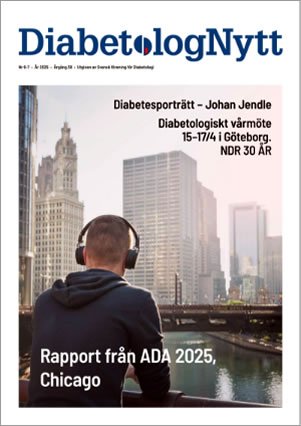Medical treatment for autoimmune thyroid disease, an infection requiring hospitalization or the development of retinopathy should “raise the suspicion” of Addison’s disease development in adults with type 1 diabetes, according to findings from a registry-based study conducted in Sweden.
The combination of concomitant type 1 diabetes and Addison’s disease is rare and associated with a more than fourfold higher risk for premature death vs. patients with type 1 diabetes alone, Dimitrios Chantzichristos, MD, chief physician at Sahlgrenska University Hospital in Gothenburg, Sweden, and colleagues wrote in the study background. Moreover, Addison’s disease can be one component of autoimmune polyendocrine syndrome type 2 when it occurs in combination with type 1 diabetes or autoimmune thyroid disease, or both.
“As the risk of developing [Addison’s disease] among patients with [type 1 diabetes] is more than 10 times higher than in the general population, awareness of this risk is of utmost importance among physicians who manage patients with [type 1 diabetes],” the researchers wrote.
In a case-control study, Chantzichristos and colleagues analyzed data from all adults with type 1 diabetes and concomitant Addison’s disease registered in the Swedish National Diabetes Register between 1998 and 2012 (n = 66; 39 men; mean age, 35 years), excluding those with a diagnosis of Addison’s disease that preceded the type 1 diabetes diagnosis. Researchers matched each patient with five control patients with type 1 diabetes alone, based on age, sex, type 1 diabetes duration and calendar year when included in the study (n = 330; 197 men; mean age, 35 years). Researchers assessed clinical data and drug prescriptions before baseline and before Addison’s disease diagnosis and used analysis of covariance models to estimate group proportions for comparisons.
Search
Among patients with concomitant Addison’s disease, researchers observed a higher frequency of multiple diabetic complications in the 2 years before diagnosis vs. controls (13.6% vs. 4.8%), in particular, retinopathy (12.1% vs. 2.1%) and a higher frequency of infections requiring hospital admission (16.7% vs. 2.1%).
Additionally, they observed higher frequencies in prescription of thyroid and/or antithyroid medications among cases vs. controls (28.8% vs. 7%), as well as higher frequencies in prescription of sedative and/or antidepressant drugs (24.2% vs. 10.6%) and glucagon (18.2% vs. 6.4%). There were no between-group differences in HbA1c before baseline or before Addison’s disease diagnosis, according to researchers.
They also observed that 29% and 33% of patients with type 1 diabetes and Addison’s disease received treatment with thyroid and/or antithyroid drugs, respectively, before and after the diagnosis of Addison’s disease.
“Our study patients already had, more than 2 years before they were diagnosed with [Addison’s disease], a higher frequency of treatment for thyroid disease compared to controls with [type 1 diabetes] alone,” the researchers wrote. “Consequently, increased attention should be given to [Addison’s disease] development in patients with concomitant [type 1 diabetes] and autoimmune thyroid disease.”
The researchers also noted that the development of diabetic retinopathy might also be associated with glucocorticoid deficiency and the development of Addison’s disease among patients with type 1 diabetes.
When to think of Addison in T1DM
“These data suggest that
1. medical treatment for thyroid disease,
2. a severe infection and
3. glucagon prescription for severe hypoglycemia should raise the suspicion of [Addison’s disease] development in adults with [type 1 diabetes],
4. Development of diabetic retinopathy might also be associated with glucocorticoid deficiency and the development of AD among patients with T1DM.” the researchers wrote.
Disclosures: The authors report no relevant financial disclosures.
Read full text abstract free
Early Clinical Indicators of Addison’s Disease in Adults with Type 1 Diabetes: a Nationwide, Observational, Cohort Study Dimitrios Chantzichristos Anders Persson Mervete Miftaraj Björn EliassonAnn-Marie Svensson Gudmundur Johannsson
Patients with type 1 diabetes mellitus (T1DM) have an increased risk of Addison’s disease (AD) development but prediction of those at risk is not possible.
Objective
To determine whether there are early clinical indicators that may denote the development of AD in adults with T1DM
Design
Observational, matched-cohort study.
Setting
Patient data from Swedish national registries (National Diabetes Register [NDR], Inpatient Register, Prescription Drug Register).
Participants
All T1DM patients diagnosed with concomitant AD (n=66) among the 36,514 adult patients with T1DM in the NDR between 1998–2013. Each case was matched to five controls with T1DM alone (n=330).
Main outcome measures
Clinical data and drug prescriptions were assessed prior to baseline (inclusion into the study) and prior to AD diagnosis. Analysis of covariance and estimated group proportions were used for comparisons.
Results
Prior to baseline, cases had a higher frequency of thyroid/antithyroid drug prescription than controls (9.1% vs 1.8%). Prior to AD diagnosis, cases had higher frequencies of diabetic retinopathy (12.1% vs 2.1%), infections requiring hospital admission (16.7% vs 2.1%), thyroid/antithyroid drug prescription (28.8% vs 7.0%), and glucagon prescription (18.2% vs 6.4%). There was no difference in glycated hemoglobin between the groups prior to baseline or prior to AD diagnosis.
Conclusions
These data suggest that medical treatment for thyroid disease, a severe infection, and glucagon prescription for severe hypoglycemia should raise the suspicion of AD development in adults with T1DM. Development of diabetic retinopathy might also be associated with glucocorticoid deficiency and the development of AD among patients with T1DM.
Nyhetsinfo
www red DiabetologNytt

